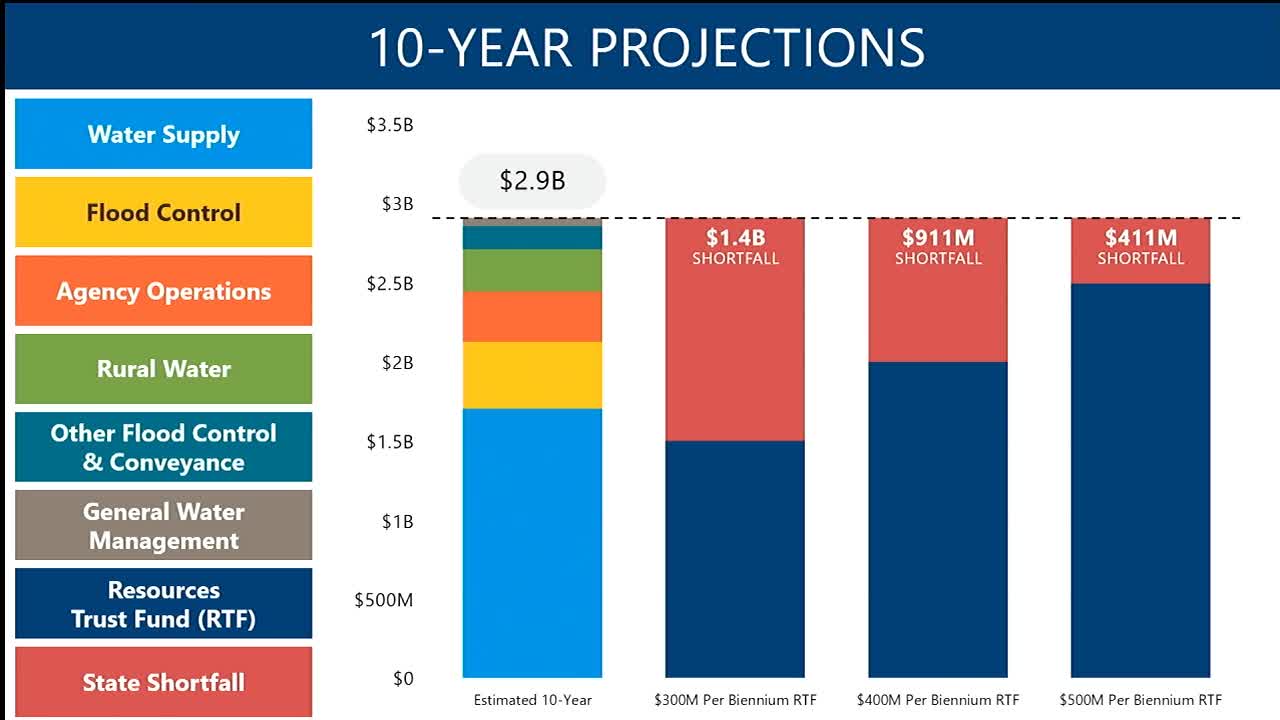State officials reveal $2.9 billion water project funding shortfall despite Resources Trust Fund estimates
January 09, 2025 | Appropriations, House of Representatives, Legislative, North Dakota
This article was created by AI summarizing key points discussed. AI makes mistakes, so for full details and context, please refer to the video of the full meeting. Please report any errors so we can fix them. Report an error »

In a recent meeting of the North Dakota House Appropriations Committee, significant discussions centered around the state’s water project funding and the limitations of the Resources Trust Fund. As the state grapples with an estimated $2.9 billion in water project needs over the next decade, officials highlighted a projected $440 million deposit into the Resources Trust Fund each biennium, which will not suffice to meet these demands.
The committee emphasized that while the Resources Trust Fund plays a crucial role in financing water projects, it will fall short of covering the total projected costs. This shortfall raises concerns about the sustainability of water infrastructure in North Dakota, especially as the state faces increasing pressures from population growth and climate variability.
To provide transparency and ongoing updates, officials mentioned the availability of a digital water development plan, accessible via a QR code shared during the meeting. This tool aims to keep stakeholders informed about the status of water projects and funding as conditions evolve.
Looking ahead, the committee is awaiting Governor Armstrong's budget announcement, which is expected to outline further financial strategies for addressing the state's water infrastructure needs. The discussions underscore the urgency for a comprehensive approach to funding, as the current projections indicate a significant gap that could impact the state's ability to maintain and improve its water systems.
As the committee continues to explore solutions, the implications of these funding challenges will likely resonate throughout North Dakota, affecting communities and their access to essential water resources. The next steps will be crucial in determining how the state addresses these pressing infrastructure needs.
The committee emphasized that while the Resources Trust Fund plays a crucial role in financing water projects, it will fall short of covering the total projected costs. This shortfall raises concerns about the sustainability of water infrastructure in North Dakota, especially as the state faces increasing pressures from population growth and climate variability.
To provide transparency and ongoing updates, officials mentioned the availability of a digital water development plan, accessible via a QR code shared during the meeting. This tool aims to keep stakeholders informed about the status of water projects and funding as conditions evolve.
Looking ahead, the committee is awaiting Governor Armstrong's budget announcement, which is expected to outline further financial strategies for addressing the state's water infrastructure needs. The discussions underscore the urgency for a comprehensive approach to funding, as the current projections indicate a significant gap that could impact the state's ability to maintain and improve its water systems.
As the committee continues to explore solutions, the implications of these funding challenges will likely resonate throughout North Dakota, affecting communities and their access to essential water resources. The next steps will be crucial in determining how the state addresses these pressing infrastructure needs.
View full meeting
This article is based on a recent meeting—watch the full video and explore the complete transcript for deeper insights into the discussion.
View full meeting
